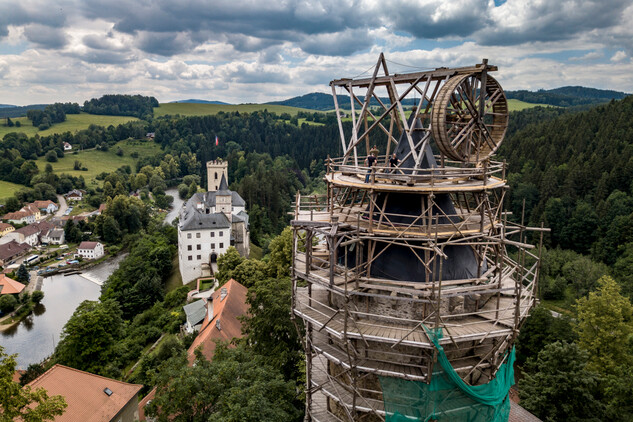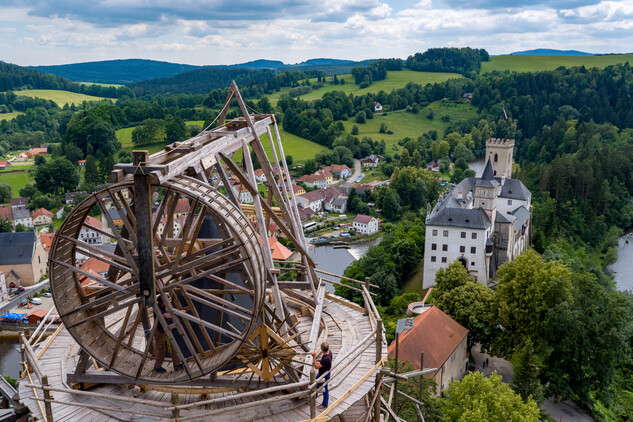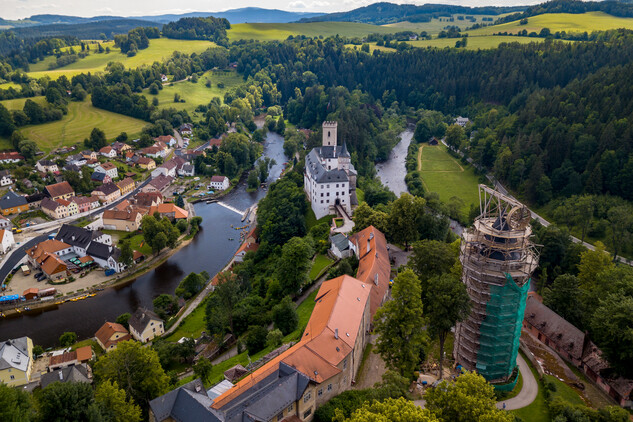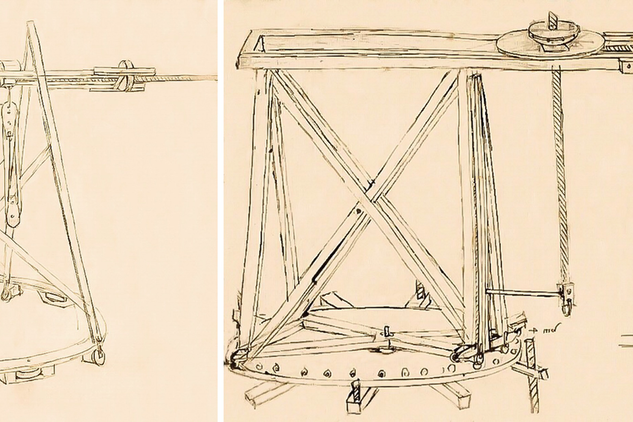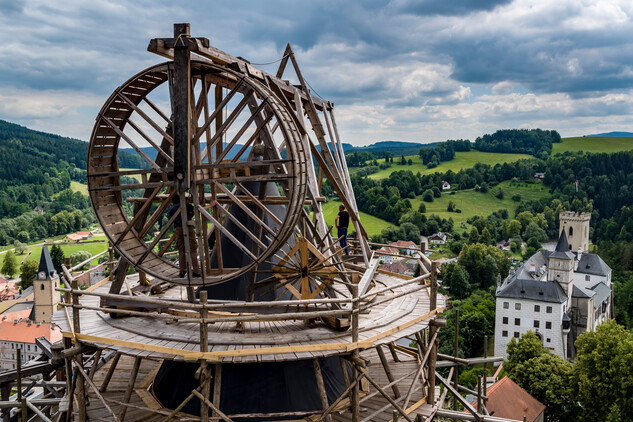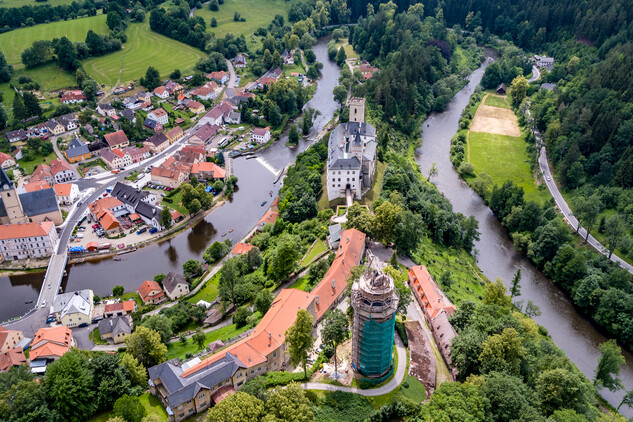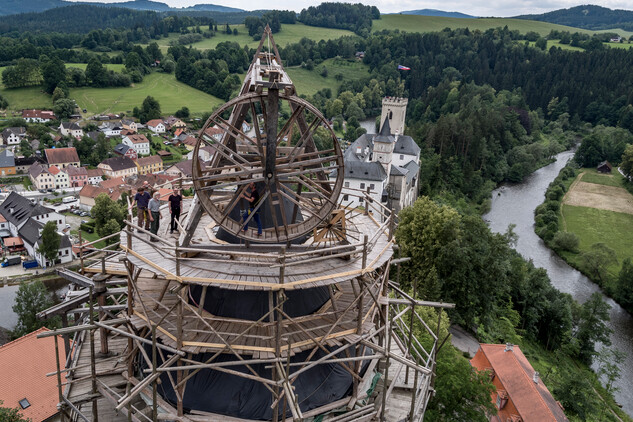The National Heritage Institute celebrates the 500th anniversary of the death of Leonardo da Vinci
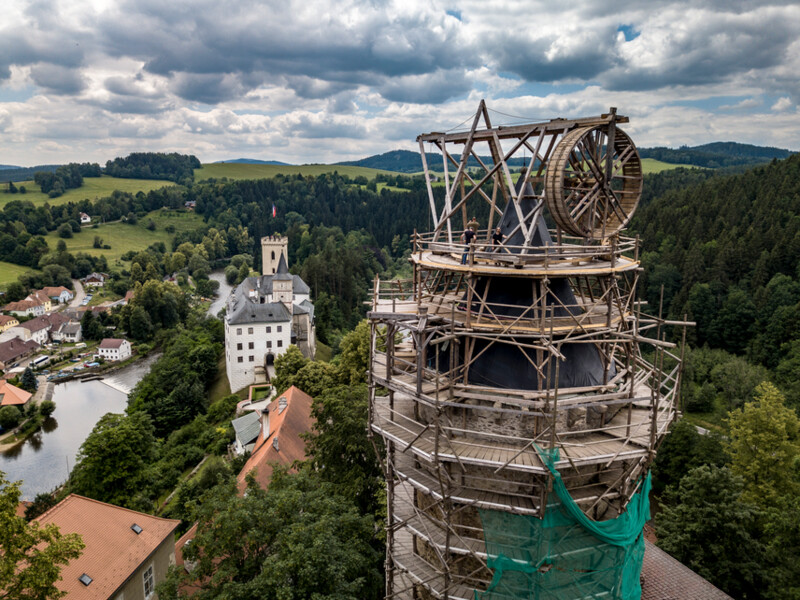
Like many cultural institutions worldwide, the National Heritage Institute in the Czech Republic this year celebrates the 500th anniversary of the death of the brilliant artist Leonardo da Vinci (15 April 1452 – 2 May 1519). On 2 May 2019, the National Heritage Institute thus presents the outcomes of the experimental project that sought to produce a functional replica of the revolving crane based on Leonardo’s sketches. This crane has been used to repair Jakobínka, the medieval tower at Rožmberk Castle (Czech Republic), which is being completed this jubilee year.
‘Based on available information, it is the only fully functional construction machine inspired by the sketches of Leonardo da Vinci in Europe,’ says Petr Pavelec, Director of the Regional Office of the National Heritage Institute in České Budějovice and co-creator of the project.
Prior to the start of the project, an historical survey of the Rožmberk Castle medieval tower was carried out as well as research of depictions of historical construction machines. It turned out that the sketches of revolving crane by Leonardo da Vinci from Codex Atlanticus, one of the most famous sketchbooks that survived in the Biblioteca Ambrosiana in Milan, best met the requirements for the planned work. In his sketches, Leonardo memorialised the construction machines he had observed while working on the Florence cathedral Santa Maria del Fiore in 1472 as an apprentice in the workshop of the famous artist A. Verrocchio. The workshop was commissioned to produce a monumental copper sphere and set it on top of the cathedral’s lantern spire. For this purpose, a revolving crane was constructed to lift and precisely set the sphere that weighed several hundred kilograms onto the desired place. Young Leonardo was fascinated by the task and later drew in his sketchbook two versions of the revolving crane that were suitable to successfully complete the work.
The revolving crane inspired by the Codex Atlanticus sketches was most suitable for the Rožmberk Castle tower restoration because its cone-shaped roof is similar to that of Florence Cathedral’s lantern spire. During Leonardo’s youth, such construction cranes were rather rare. ‘However, after 1500 they appear to have also been used in Central Europe. When the conical Jakobínka Tower at Rožmberk Castle was repaired after the 1522 fire, the revolving crane of a similar type to that sketched by Leonardo in Florence 50 years earlier may have been used,’ says the master carpenter Petr Růžička who constructed the unique functional replica of the crane for the National Heritage Institute’s project.
The building season on the Jakobínka tower has started at full speed. Mr. David Říha, the building technician of the National Heritage Institute (Národní památkový ústav) in Ceske Budejovice, said: “The crane and scaffolding were inspected and small repairs were done. After the winter season, the crane was lubricated, tested with a load and put into operation again. The material for the rafter construction was lifted up and the rafter was assembled”. Currently, the final works on the new rafters are being completed and the preparation for the installation of shingle roofing is in progress. Before it is done, tinsmith details that use lead plating will have to be completed. After the installation of shingle roofing, stonework will be completed and this will include the final treatment of newly installed stone supports (corbels), cornices and troughs. In the workshops, carpenters are preparing the production of the wooden gallery which will be laid on the stone corbels.
Overall costs (since 2013, when the project for restoration and access of the medieval Jakobínka tower was presented and opened) have reached almost 12 million CZK.
Important facts about the replica of the rotating crane
- The replica of the crane is located on the top of the Jakobínka tower at a height of about 35 metres. It is 14 metres long and 7 metres high with a wheel for human drive and this can rotate around its axis. Thanks to this, it can reach the entire surface of the tower to the top.
- The crane was made by three carpenters. The selection and preparation of timber took a month, and it took 6 months to produce and 3 weeks to assemble. It cost 2.3 million CZK.
- The timber used comes from local forests. Mainly this is spruce timber; only selected parts are from oak wood. The structure was chiselled manually using axes of various types and without using any electric tools. Smaller cylindrical parts were lathed (manually powered lathes were known in the middle ages). Iron clamps used as fasteners were forged by a forger.
- The timber was preserved by curd and, as well as other lubricants, lard is used for lubrication.
- The crane’s weight is about 3.8 tons and approximately 9.5 cubic meters of timber was used.
- The crane is a two-speed crane with gears placed directly on the main shaft in the form of a sliding drum and shifting can be done when the rope is unrolled.
- The machine is designed to safely lift a load of up to 500 kg when a man with the minimum weight of 70 kg walks in its wheel.
- One lift of the load takes an average of 7 minutes.
- The construction of the crane started at the site of the Jakobínka tower in autumn 2017; the unfinished structure was left over the winter and in spring 2018 the machine was completed and commissioned.
- The lifting equipment is operated by three workers: the first one walks (in this way he/she controls the running wheel), the second assists in the control of the running wheel and the third (who is the lifting group lead) helps with the horizontal rotation of the hoist and checks the motion of the load and gives instructions for the start and interruption of lifting, etc.
- Two permanent temporary workers (a girl and a man) and occasionally 12 volunteers take turns to walk inside the wheel and power the crane.
- The crane is placed on the tower top. It has arranged the transport of approximately 15 tons of material to the top so far and there are still about 10 tons left.
- The creator of the crane is carpentry master, Mr. Petr Růžička, who cooperated with Ing. Vít Mlázovský and Ing. Filip Chmel who are experts in statics. The computational model for computer verification of dimensions was carried out by Associate Professor Fajman from the Czech Technical University in Prague.
